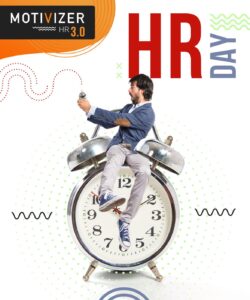Burnout, how can an employer help an employee?

kategorie: Motivating employees
temat: benefits, employee health, management philosophy, professional burnout, time management
The COVID-19 pandemic has had a lasting impact on both employees and employers, as well as on the rising inflation and conditions in global markets. The phenomenon of burnout is becoming more prevalent.
What is burnout?
Burnout syndrome (professional burnout), according to H.J. Freudenberg, is characterized by mental and physical exhaustion, excessive irritability and a feeling of chronic boredom. It is the body’s reaction to chronic stress caused by work.
It occurs when an employee reaches the so-called “wall” and stops developing professionally, and the work performed no longer gives them satisfaction. This syndrome usually appears in people who can be called workaholics. To minimize the occurrence of burnout, concepts such as Work-Life Balance, Healthy Organization, and Organizational Culture in the Company have been created.
Burnout is a civilization disease. It has been studied since the early 1970s. Doctors agree that burnout can affect representatives of any industry, and its effects can be physical, emotional, and behavioral.
According to E. Aronson, burnout is the result of long-term and repeated overload of the body as a result of intensive work for others. It is the realization that we are unable to help people, cannot give anything more and have completely exhausted our own strength
The basic symptoms of professional burnout
The basic symptoms of professional burnout are:
- Constant and increasing stress – the employee feels stress related to work even when they are at home. Stress combined with a flood of thoughts about work responsibilities contributes to a direct reduction in employee motivation. Very often, the employee dreams of being fired. Stress related to being fired can be so strong that it also enhances other negative effects of professional burnout.
- The feeling of excessive workload – too high a pace of work, excessive employee engagement and disturbances in the work-life balance, make the employee feel more sleepy, sluggish and less efficient at work.
- A sharp decline in employee motivation and self-worth – the employee does not see their successes at work and stops appreciating them. He feels that his work is worse than others and loses motivation to work.
- Problems with concentration – related to sleep problems. The flood of thoughts and work-related stress does not allow you to fall asleep, so the employee wakes up unrefreshed and has worse concentration. Additionally, the employee starts to notice the negative effects of concentration problems, stresses over the sleepless night and cannot fall asleep. The cycle closes. Psychological fatigue leads to making mistakes at work, and in turn, made mistakes increase stress related to work.
- Worsening, less empathetic approach to customers and colleagues – negative change in employee behavior towards customers and reluctance to interact with colleagues are common symptoms of professional burnout.
The impact of the pandemic on employee needs and the emergence of professional burnout
Employees are increasingly considering a change in their current career path if working conditions become less favorable. In addition to regular pay, greater flexibility in working remotely and a better work culture are becoming increasingly important to them. According to the ADP “People at Work 2022: A Global Workforce View” study by Nela Richardson and Marie Antonello, 7 out of 10 employees are seriously considering not only changing employers, but also their career path.
You can read the study on the author’s ADP website (click to go)
Workplace burnout and medical leave
In 2019, the World Health Organization included burnout in the International Statistical Classification of Diseases and Health Problems (ICD-11). It will take effect from the beginning of 2022, this raises the question of whether doctors can issue L4 due to burnout in patients.
However, legal experts warn that receiving L4 due to burnout will not yet be possible. Legislative work is necessary for this to happen, and as of the first half of 2022, it is not planned.
The impact of stress on work quality
The same ADP study shows that the number of employees experiencing stress at least once a week is increasing – 67% to 62% in 2021, and one in seven people experience stress daily. The transition to remote or hybrid work has made employees feel more appreciated and rewarded, and they also report receiving better support for career development. The need to return to on-site work may have the opposite effect and cause stress and anxiety in employees.
Workplace burnout, how can an employee help themselves?
Disrupting the balance of personal and professional life can increase the symptoms of burnout, so employees should take care of their health, starting with a healthy amount of sleep (about 8 hours per day). It’s good if employees have a hobby or interest that they can devote themselves to in their free time. This is a way to focus on something that relaxes us.
The next step is physical activity. Doctors recommend movement as a cure for excessive cortisol levels in the body (a hormone that causes stress). Daily exercise, running, or cycling can reduce stress and significantly improve not only the general well-being but also the health.
Jak uniknąć wypalenia zawodowego, czyli o systemie benefitowym
Employers are responding to the risk of burnout among employees and improving working conditions.
Employers confidently declare that they value employment that allows for a dignified salary, but not at the expense of mental and physical health, family life, and personal values. ADP research shows that 33% of people say that flexible working hours are important to them, as well as enjoying their work (32%). However, the possibility of advancement is “only” important to 23%.
Therefore, employers offer flexible working hours, the possibility of hybrid work, support for young mothers, e.g. a nursery close to the office, or other benefits. Rewarding employees is already a standard phenomenon, although employers differently interpret the attractiveness of the benefits offered. A solution to this type of problem is a cafeteria system. This is a benefit system that has several dozen benefits from which the employee can choose the one that he finds most attractive. This is a large flexibility of this solution, every employee has different aspirations, is guided by different values in life and different factors motivate him to act. Giving the employee the choice of benefits improves the relationship between the employee and the employer, and increases the employee’s work efficiency.
Among popular benefits are professional medical care, financing trips, or gaming services such as PlayStation Plus or Xbox Live.
The cafeteria system offer adapts to the needs of the market and employees, this is shown by the introduction of gaming services benefits, which are gladly used by IT employees.
Recent Posts:
- Capital24.tv Debate with Piotr Dubno – “Economy, Innovation, Investments. What Changes Await Us?
- The future of HR – what will be the key to organizational success?
- Are you keeping up with the idea of a modern workplace?
- Burnout, how can an employer help an employee?
- Digitalization of HR is key to unlocking the full potential of an organization

